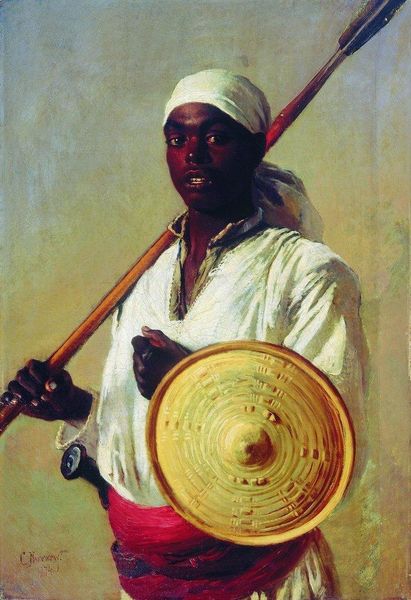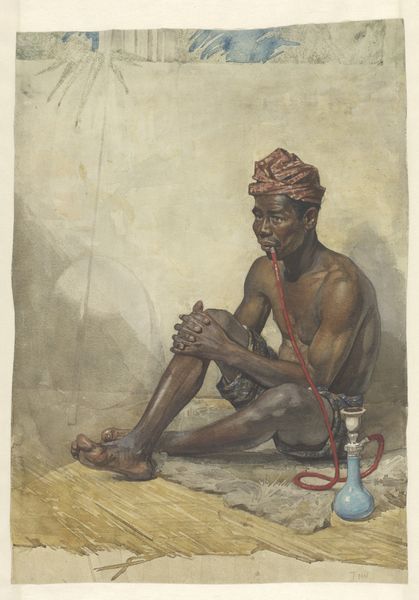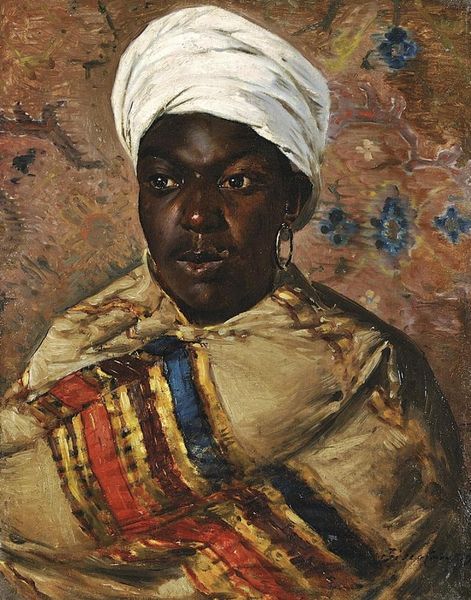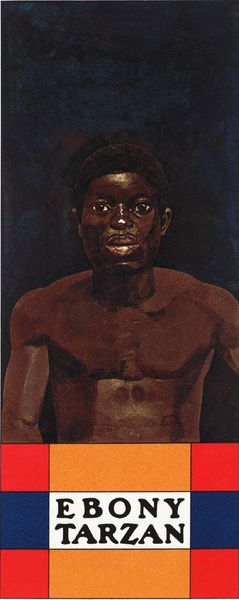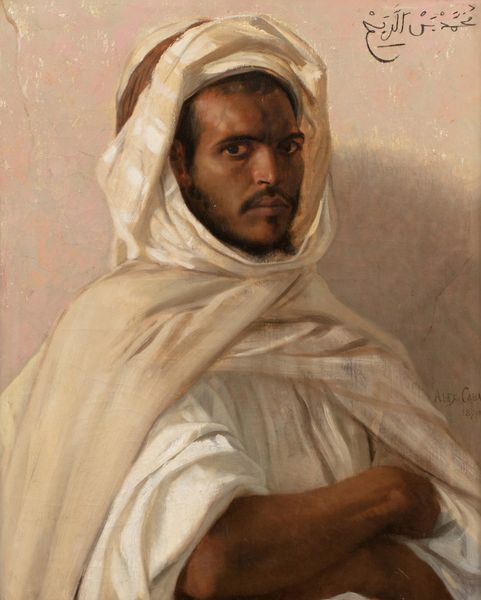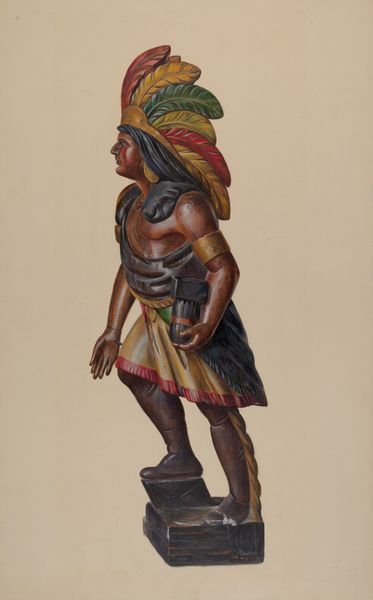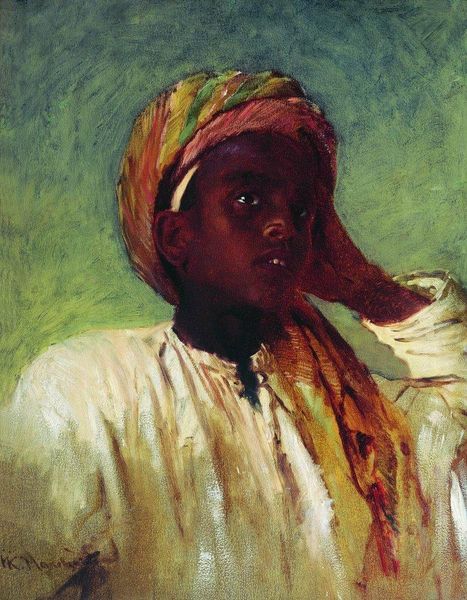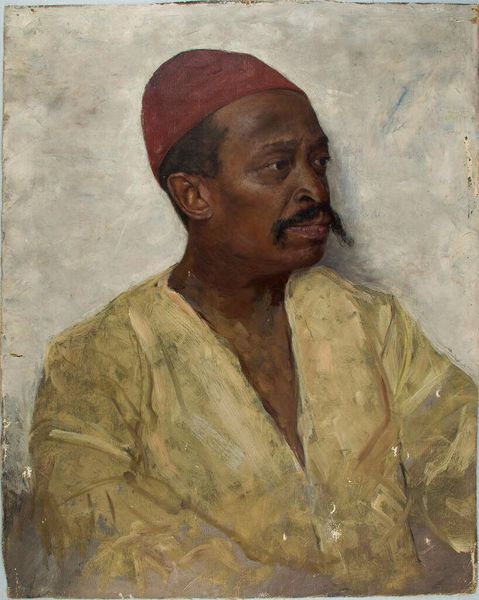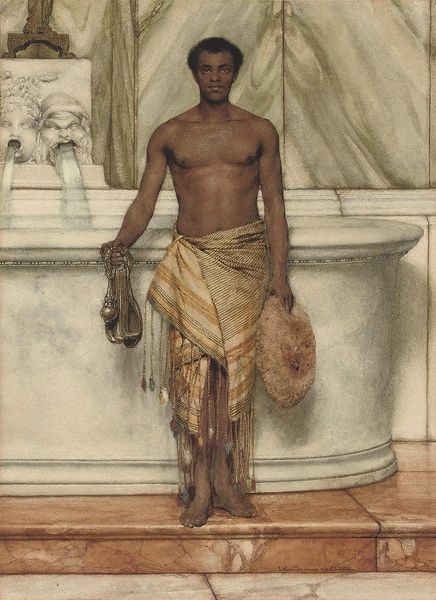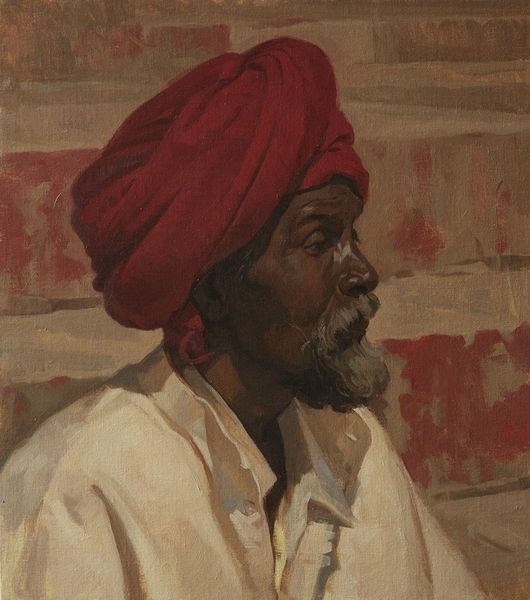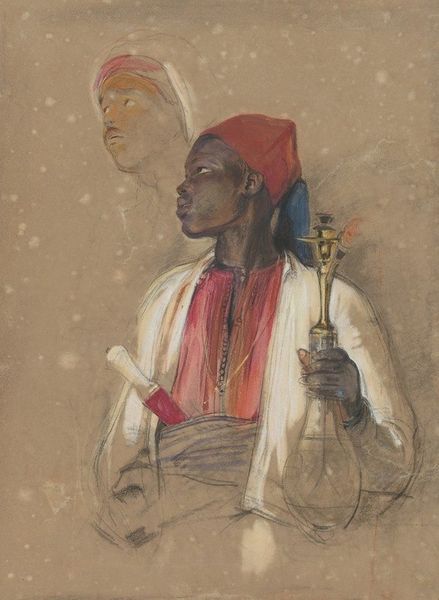
oil-paint
#
portrait
#
impressionism
#
oil-paint
#
oil painting
#
genre-painting
Copyright: Public domain
Curator: Welcome. Today, we’re examining “Music in New Orleans” by Francis Davis Millet, a genre painting rendered in oil on canvas. Editor: I’m immediately struck by the intimate mood. It’s loose, painterly; it feels warm, immediate, almost like glimpsing a fleeting moment. The informality in both subject and handling creates a wonderful effect. Curator: Indeed. Millet's application of Impressionistic brushwork emphasizes light and form over detailed realism. Observe the background; it dissolves into a haze of browns and creams, putting maximum emphasis on the figure. This is balanced by the geometric blocks in his clothing, as well as the instrument in the player's hand. Editor: I find the lack of specific detail…telling. Here we have what might be perceived by some as a kind of cultural appropriation. Is this musical scene idealized or observed? Is the individual represented here provided with sufficient agency, or has he been flattened into an anonymous portrait of an individual from this time period? The gaze is intense, dignified; he is, indeed, looking past and through the presumed European colonial viewer. I cannot assume whether he performs for enjoyment, but his engagement is powerful. Curator: Note how Millet employs contrasting hues to create definition and structure in the picture. The musician’s warm brown skin juxtaposed with the stark white of his attire and instrument draws attention to form. Also the strong diagonal of the man's right forearm provides forward momentum for the viewer's eye. Editor: Yes, and understanding the history of representation, particularly of Black individuals in art, is vital. The painting serves as a prompt to interrogate racial and socioeconomic power dynamics in the context of the South during this period, offering a glimpse—potentially filtered and complicated—into the artist and subject relationship during that period. I do want to see how this might play against and challenge stereotypes, and perhaps this is something we may want to research as a follow up? Curator: Perhaps. Ultimately, Millet invites us to consider not just what we see, but how these visual components collaborate to give form, depth and significance to this piece. Editor: This makes for a provocative case study into portraiture. It encourages us to examine the role of visibility and self-representation within contexts marred by racial and economic injustices.
Comments
No comments
Be the first to comment and join the conversation on the ultimate creative platform.
